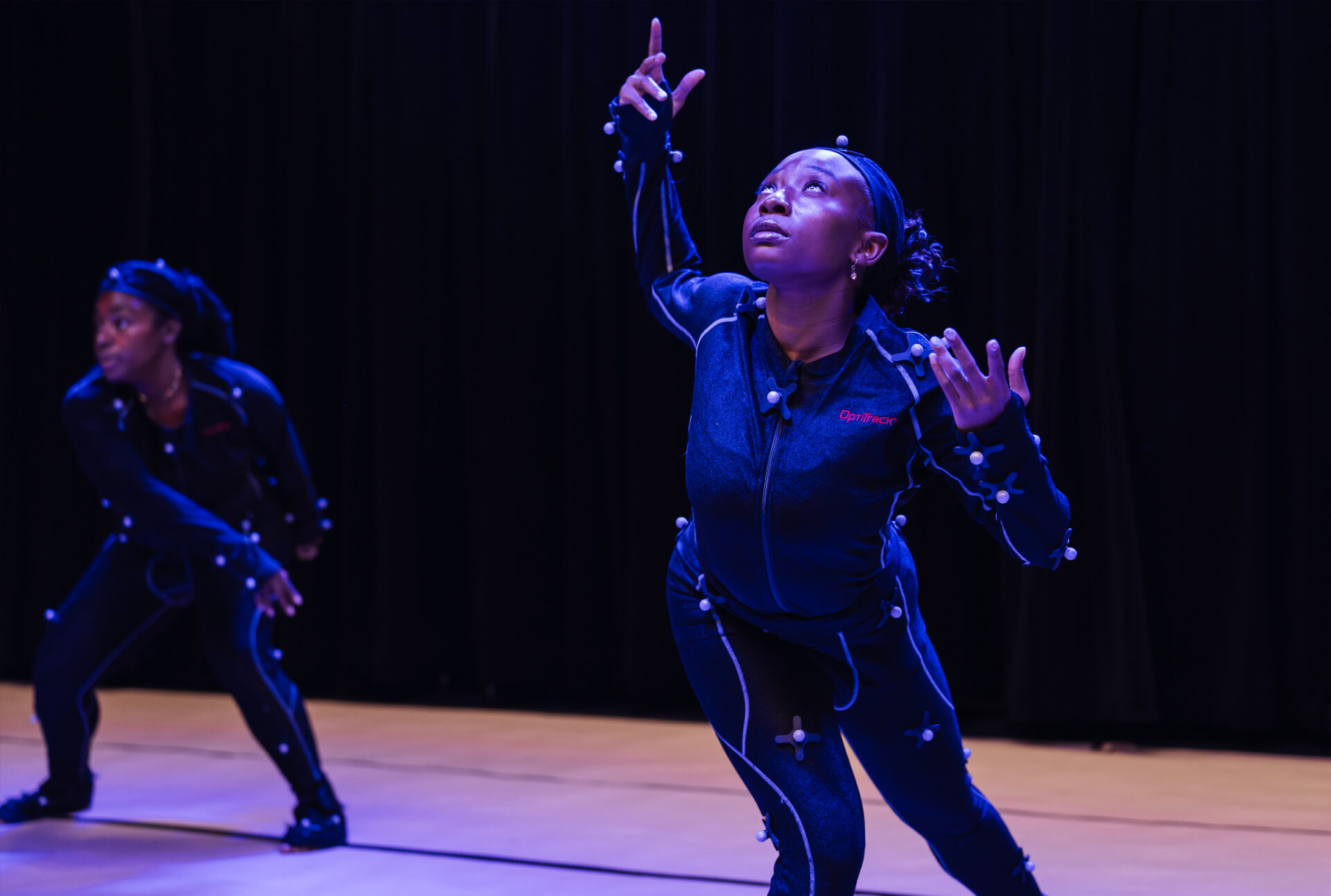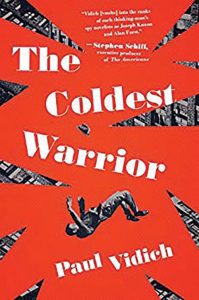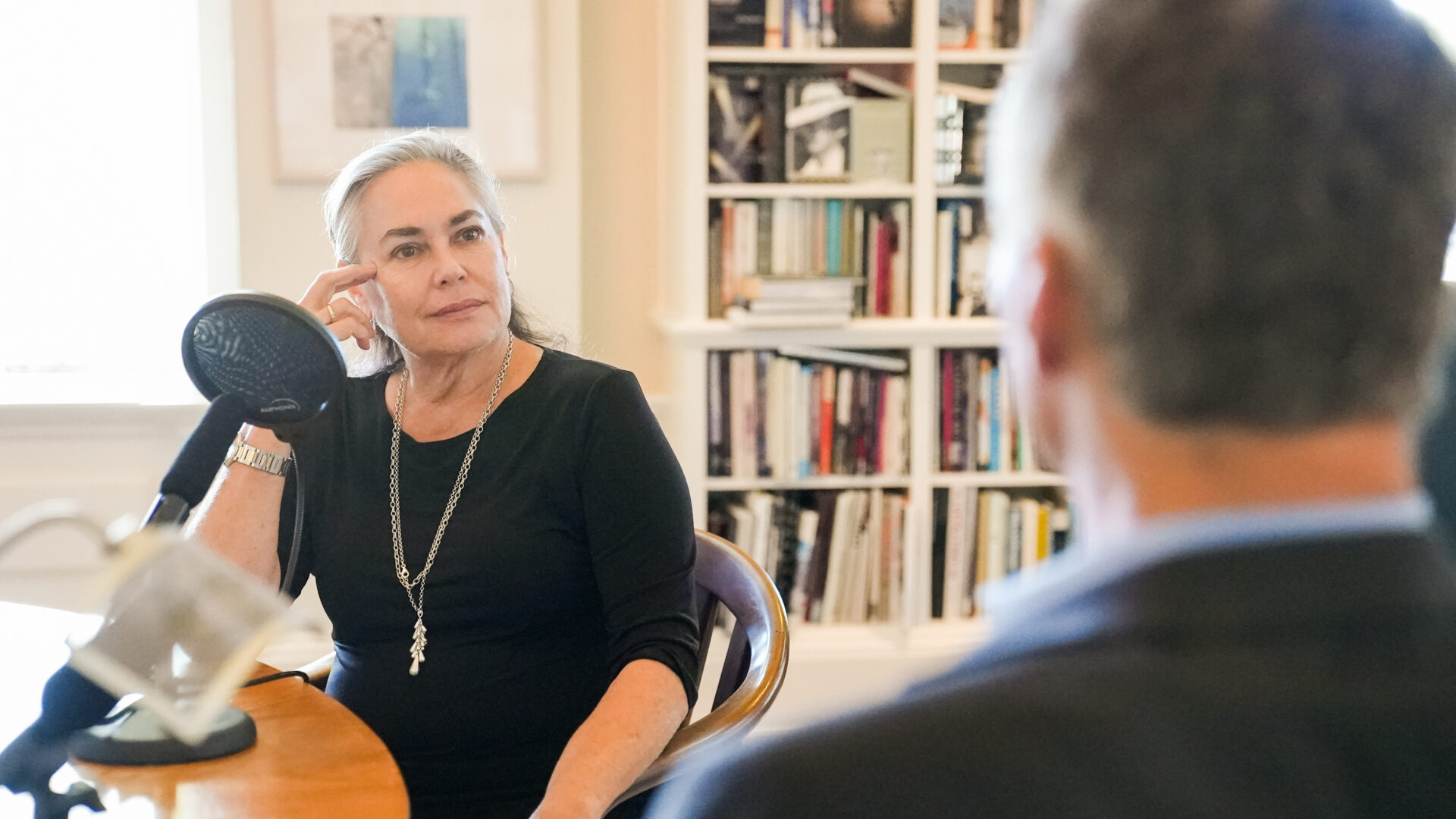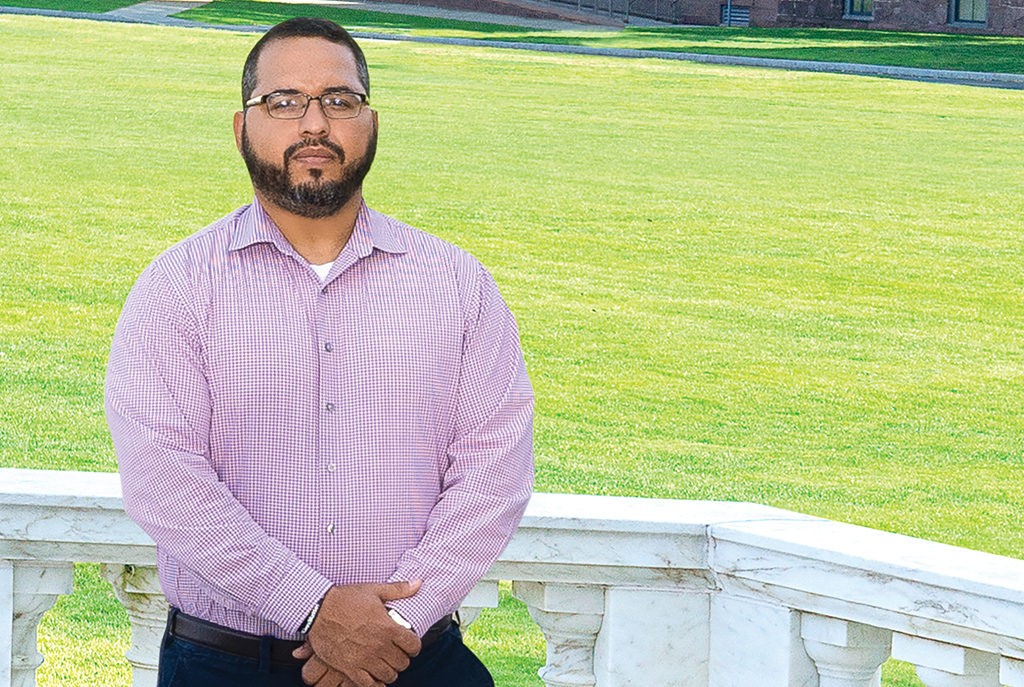Words, Music, and AI: Inside Wesleyan’s Music Video Production Course

Music videos used to be the domain of hitmakers with million-dollar budgets, big crews, and record-industry backing. But with AI-driven software and access to advanced Digital Design Commons technology, students in Wesleyan’s new music video production class are creating pro-quality work that explores new frontiers of the art form.
Wedged inside an astronaut suit and in the throes of cosmic melancholy, Greg Joblove ’26 narrows his eyes and says, “Okay, this is where I’m flying through the wormhole.” He’s disconnected from the space station that provided him a lifeline, recalling past journeys to alien planets as distant suns and kaleidoscopic lights shine through his visor, and as he tumbles through space toward some unknown fate.
At least, that’s what’s happening on the laptop screen across the room. Joblove is actually right here on Earth, finishing his final project for ARST387: Virtual Production: The Music Video in Wesleyan’s Digital Design Commons (DDC). Wearing a motion capture suit—something like a surfer’s wet suit peppered with marble-sized reflective balls, which tie into a dozen specialized cameras arrayed on the room’s perimeter to turn the wearer’s movements into three-dimensional images—he stands between a green screen and a tripod-mounted camera, cycling through squints, winces, and grimaces as part of a process to make his face appear to be that of an astronaut hurtling through computer-generated space-scapes, a concept he ultimately sets to song.
“I’m really trying to lean into the music video as a medium,” Joblove says, “and do something that would be kind of impossible to do in a more traditional way.”
In a sense, that could be the ethos of the entire class, which wrapped its first session in the fall. Producing professional-level music videos used to mean procuring expensive equipment, large crews, and the blessing of a corner-office executive. Now, by seizing on cheap, accessible technology and the DDC’s advanced facilities, projects like Joblove’s prove that, in the digital age, the far-off frontiers of music video–making have scarcely been closer.
“It’s been fascinating to see that the lone creator, with the tools at their disposal, can craft something [now] that 10 years ago would have been unimaginable or impossible to create,” says Pedro Bermudez, assistant professor of the practice in video and audio production, who leads the class together with Ilana Harris-Babou, assistant professor of art and a time-based media artist. “That’s not an exaggeration by any stretch: it’s that simple.”
Video by Greg Joblove ’26
A few doors down from the motion capture studio, 10 students gather around a large table and hunch over their laptops, some huddling together in small groups and others solitarily keying out the ideas taking shape between their AirPods. The darkened room is suffused with end-of-semester energy: In two days, they’ll be screening the music videos they’ve spent the term learning to create in front of their classmates. (“Ask a friend to take some notes for you during the critique,” Harris-Babou says, “because it can go by so fast.”) As Harris-Babou and Bermudez confer with students and give post-production suggestions, a glance over their shoulders reveals traces of the form’s past in the students’ work: the gloss of mid-2000s hip-hop videos, the art-room eccentricities of the grunge era, the nostalgically boxy computer graphics ripped from the nascent days of MTV.
After the channel’s debut in 1981, watching MTV’s parade of Day-Glo New Wave artists and Aqua Net–addled glam metal bands quickly became an afterschool ritual for millions—a means for audiences to discover new artists and for groups to build identities that transcended the audio-only limits of radio. “[Music videos have] always provided an opportunity for the artist to express themselves visually, in a way that prior to the art form could only happen when you saw a one-time live performance,” says Pete Ganbarg ’88, a Grammy-winning record producer and a senior Artists and Repertoire (A&R) executive who’s teaching a class on A&R at Wesleyan this semester.
As Ganbarg built his career in the recording industry at the same time MTV gained influence, music videos—a form squarely at the intersection of art and commerce—became an essential facet of marketing artists to audiences. (“You have to figure out for the moment: What’s going to help people embrace your art?” he says.) Short-form music videos provided early-career springboards for Hollywood filmmakers like Spike Jonze and David Fincher. At the apex of the medium’s cultural and commercial influence, ambitious ideas and big names commanded million-dollar budgets. “A great video could break a band,” Ganbarg says. “I don’t know if that’s the case anymore.”
From YouTube to TikTok to Instagram, the sheer abundance of music videos in our post-MTV age is a product of a wider digital democratization. Just as the ultra-expensive resources required to make professional-quality music shrunk to the size of the smartphone in your pocket, formerly sky-high barriers to making music videos have collapsed. “For the students studying the art form now, with AI and with all the tools to come in the future that aren’t here yet, it’s just going to get more interesting,” Ganbarg says.
In ARST387, generative artificial intelligence figures heavily into the software students used throughout the semester, from Adobe After Effects for motion and visual effects, DaVinci Resolve for color-grading, and Blender, a free, open-source platform used to craft digital matte paintings—essentially, cinematic environments conjured out of blank computer screens. Conceived as a production course imbued with a studio arts perspective, the class centers around giving students the basics in a host of skills—from lighting to green-screening to recording live performances—then developing them in hands-on breakout sessions.
“We want people to be able to bring things to life as quickly as possible,” says Uday Narayanan ’24, visiting instructor of video and audio production, who leads the class’s mandatory production lab in the DDC. “It’s having that balance, where we get into some of the root fundamentals they should know and ideas they should be familiar with, but also trying to give them the ability to just make something cool.”
By attaching their development to projects of their own, it’s enabled students to learn skills in ways relevant to their vision. For instance, Joblove—a film major and IDEAS minor who enrolled in the class to go deeper on visual effects—studied reference material and worked with his instructors to hypothesize a bespoke approach to transfer his visage inside an astronaut’s helmet using Blender. “You’re learning the bleeding-edge software, but there’s also a focus on what it means to work with people who are also pushing this technology,” Joblove says. “It’s more about learning through experience.”
Beyond building practical skills, the course probes deeper issues surrounding music videos, from high-level questions about the format’s historical power brokers—as Harris-Babou says: “Who gets to have their image recorded and taken, who has control over that [process], and how has it developed in tandem with technologies?”—to their effect on seemingly neutral tools. When students trained to use the roto brush in AfterEffects to separate motion from the background, for example, they also learned about the history of rotoscoping in transposing the motions of Black dancers onto cartoon characters, a process intended to make such movements more palatable to white American audiences, Harris-Babou says.
Video by Nina Kibria ’27
Ultimately, the class amounts to a thorough education in an elastic mode of expression. “There are no rules for the music video,” Bermudez says. “The storytelling could be entirely surreal or nonlinear. You don’t have to follow a narrative structure. The students can explore the subconscious, they can explore desire, and they can create imagery that doesn’t necessarily have to align with any world that we’re used to.”
The project created by Mia Alexander ’26, a film major, doesn’t even exist in a single world: it navigates between them. “Broken down very simply, this weirdo outcast gamer femcel character falls in love with this unattainable manic pixie dream girl,” Alexander says, “and tries to win her over, but can only really express her true feelings in the form of this imaginary video game.” The execution is a little like Mortal Kombat meets Scott Pilgrim.
Video by Mia Alexander ’26
Alexander initially planned on pairing the concept with a Weezer song until her roommates asked her to couple it with a song by their band, Passenger Princess. So, following an eight-hour shoot, Alexander recruited the members of Passenger Princess to climb into motion-capture suits and perform movements she’d later map onto the video game characters in Blender. “It’s incredibly unique to Wesleyan that we’re able to access these facilities,” she says. “I can just walk into the DDC and book the [motion capture studio] for 6 p.m., and you can’t do that basically anywhere else.”
For Alexander, the course was illuminating. It provided her introduction to virtual production. It revealed the pervasiveness of computer-generated imagery throughout our entire media landscape. It filled her with a new appreciation for the art of music videos. Put succinctly, she says, “It’s my favorite class that I’ve taken at Wesleyan.”
Lead image: Inside Wesleyan’s Digital Design Commons, creators can access top-shelf technology—including motion capture suits that turn the wearer’s movements into three-dimensional digital images—to execute ambitious projects that were once out of reach.



